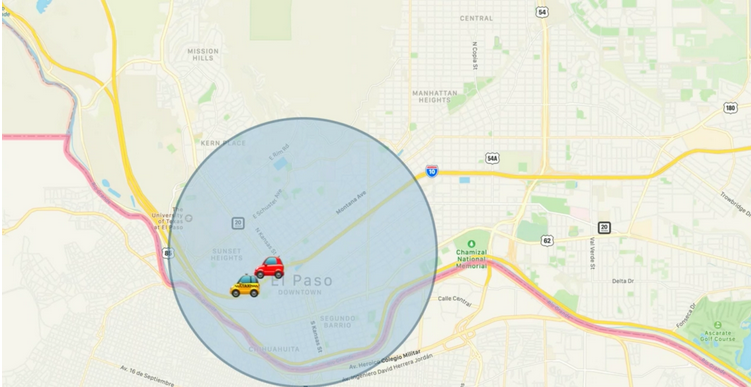We Can Tell You If You Need to be Concerned—or Not Worry at All—If iOS14’s Change Will Impact Your Location-Based Data Marketing Programs
By Mark Ailsworth
Back in June, Apple dropped an announcement on how its latest iOS14 operating system will put restrictions on how consumers are tracked on their devices. The move has dramatic repercussions on the way marketers have been able to track, target, and measure advertising effectiveness—with some saying that this move rewinds the mobile industry back ten years.
Apple later decided to delay the move to early 2021 as not to add insult to injury for a world still under the grips of a pandemic. However, the delay is just pushing out what will soon be an inevitability that brands will need to be ready for—and if it weren’t for COVID-19, this shift might be the biggest thing on their minds.
And all marketers—not just mobile marketers—will be impacted. With 60% of all mobile traffic in the US from iOS devices (and 25% globally), every brand will need to figure a way forward. Apple is offering some options to alleviate the pain, but it certainly doesn’t solve the giant issue at hand.
Why this move right now? Apple is following the path of others who are leading the charge for safer consumer data privacy which is needed to let the new mobile-first web experience flourish the way it should over the next several decades. While that will benefit all parties in the long run, the short-term cost of limiting mobile marketing practices will certainly be felt across the industry.
The impact of iOS14 on location-based marketing
One of the specific pieces of the iOS14 changes that will directly affect location-based marketing will be that location-tracking will now be turned off by default and require users to opt-in. While no one knows exactly what percentage of consumers will opt-in to be tracked, conventional wisdom suggests that adoption will be low.
If users do not opt-in to location tracking, Apple will designate the user’s Approximate Location within their proprietary segmentation of the global into 10 square mile pieces. Use cases like weather apps won’t see much impact, as understanding a user’s location within 10 square miles will still be effective for their purposes. However, for the majority of marketers, not having a more precise location identified will be extremely limiting versus the level of resolution they enjoy now of nearly 5-10 feet! In most cases, this will leave marketers with access to primarily Android produced location data for analytics purposes.

By default, iOS14 will share a user’s location with apps via 10 square miles blocks
One of the building blocks of location-based data is consumer traffic patterns. By understanding how people who visit and don’t visit their physical locations, brick & mortar businesses can better understand how to plan media to drive more foot traffic. But it’s more than customer insights…location-data that drives targeting, message personalization, measurement, and optimization will all be affected.
If your brand leverages location-based data—either through 3rd parties that use it or via your in-house practice that subscribes to the data directly—you will be affected. There’s a very good chance that nearly all national businesses with brick & mortar locations are part of that group. However, even marketers at a brand that don’t have physical locations will be impacted as well because of how ubiquitous location-based data has become in modern advertising.
How simMachines is helping brands navigate the post-iOS14 location data era
The problem that simMachines was built to solve is to help brands better segment their customers into meaningful clusters using explainable machine learning. This approach lets brands quickly understand their visitors and their visitation habits at a far more granular level than using the entire location data stream while providing customer anonymity and data security. The same technology can be harnessed to identify if a brand’s visiting customer segments have different distributions of iOS vs Android devices, allowing analysts to quantify how their work will be impacted by the coming change.
We feel that the way that a company segments its customers is a strategic asset. Poor segmentation means that your view of your customers doesn’t accurately reflect them and marketers chase the wrong things and have a reduced ability to drive bottom-line business results. However, with powerful segmentation, marketers have an accurate representation of their customer base and understand how to best engage and market to them.
Location-based data is just one of the datasets simMachines uses to develop these highly meaningful, AI-based segments for our clients. We also use a variety of other datasets such as the brand’s own first-party customer data and 3rd-party data vendors to fill in gaps where needed. While the iOS14 location-based data limitations will be felt, the fact remains that our segmentation approach will continue on developing the most meaningful audience clusters based on the data available.
simMachines can tell you if it the iOS14 changes will be dramatic for your marketing—or if you don’t even need to worry
simMachines is offering a free analysis of the impact of iOS14 on your location-based segmentation to see if your location data-driven marketing analytics will be impacted by the evaporation of most iOS device location data.
We can analyze how the distribution of iOS versus other devices types have historically fluctuated within the various clusters of visitors quantifies the impact of the coming iOS14 privacy enhancement, providing an understanding of how disruptive the change will be and the extent to which it can be mitigated.
Interested in this free analysis?
Maybe you don’t need to worry much about how iOS14 will impact your location-based data program—or maybe you need to start preparing now for the shift?
We’re happy to help!
Here’s my email address: markailsworth@simmachines.com. Simply email me and we can let you know if we have enough in our database to provide you this free analysis.
